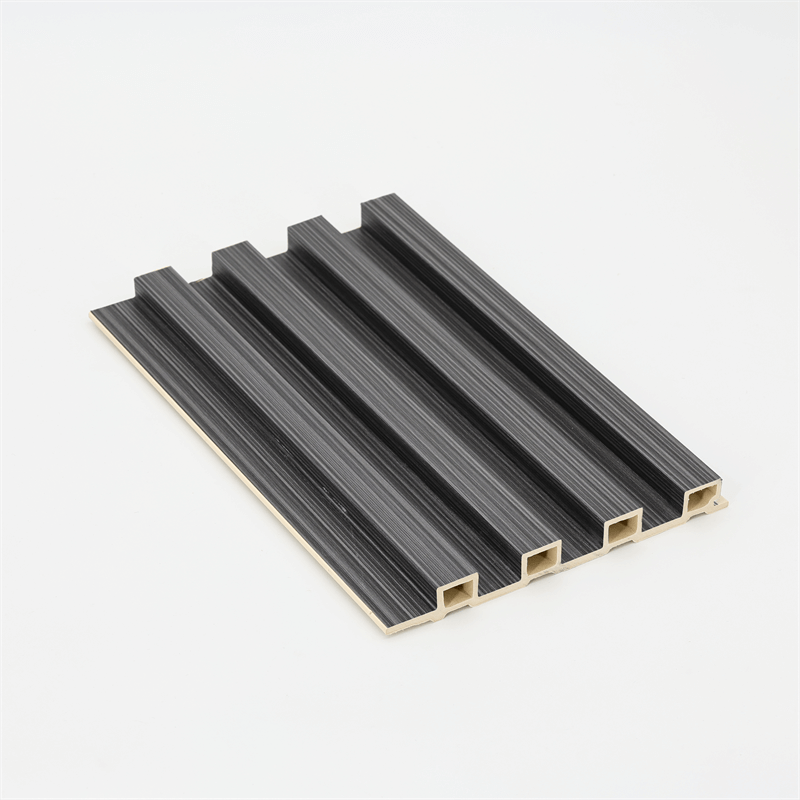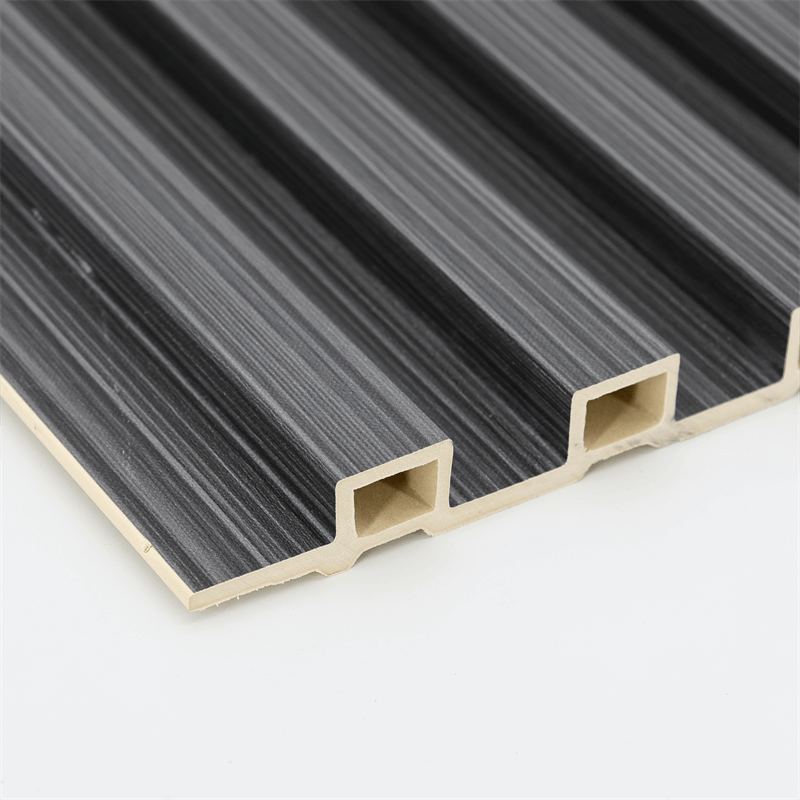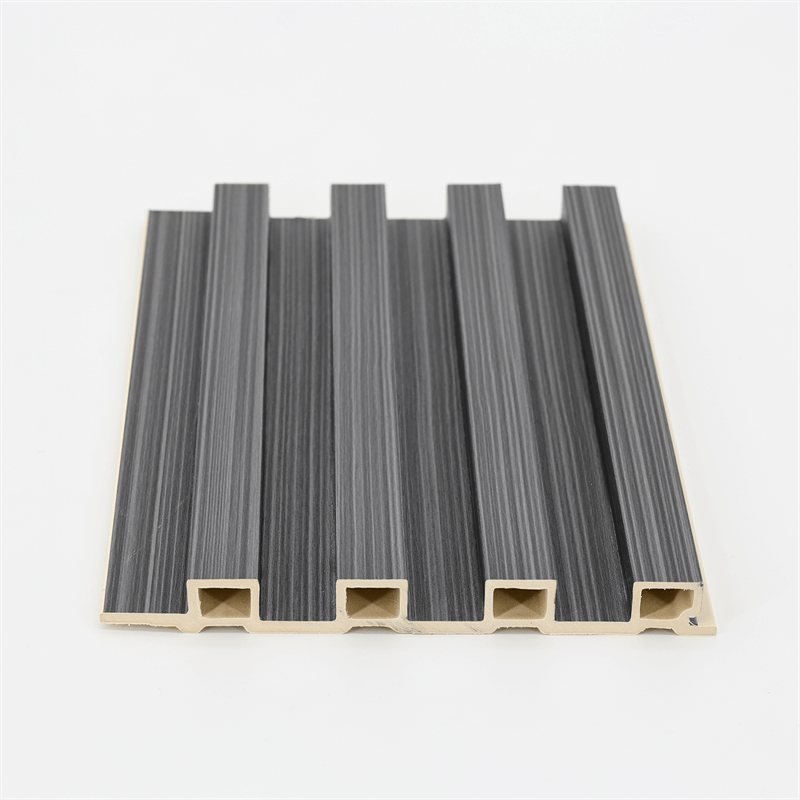
Wood-Plastic Composite (WPC) fluted panels have emerged as a popular and versatile building material in the world of interior and architectural design.
Combining the natural aesthetics of wood with the durability of plastic,
WPC fluted panels offer a range of features and benefits that make them suitable for a wide array of applications.
In this comprehensive guide, we will explore the features, advantages, and various applications of WPC fluted panels,
shedding light on why they have become a favored choice in modern construction.
Introduction to WPC Fluted Panels
WPC fluted panels are composite materials made by combining wood fibers or flour with thermoplastics, such as polyethylene, polypropylene, or PVC.
The mixture undergoes a heating and compression process, resulting in a sturdy and resilient panel that exhibits the best qualities of both wood and plastic.
The fluted design on the surface of the panel enhances its structural integrity, making it even more durable and lightweight.
Water Resistance: WPC fluted panels are highly resistant to water and moisture,
making them suitable for both indoor and outdoor applications, including areas prone to high humidity or wet conditions.
Termite and Rot Resistance: Unlike natural wood, WPC fluted panels are not susceptible to termite attacks or decay, ensuring longevity and low maintenance.
Dimensional Stability: WPC fluted panels have minimal expansion and contraction due to temperature and humidity changes, ensuring consistent dimensions over time.
Aesthetics: The fluted design on the surface of the panels adds a distinctive visual appeal,
resembling the look of grooved wood and enhancing the overall appearance of the structure.

Advantages of WPC Fluted Panels
Environmental Sustainability,WPC fluted panels are considered an eco-friendly alternative to traditional wood products.
By using recycled wood fibers and recycled plastics, these panels contribute to reducing waste and conserving natural resources.
Furthermore, the manufacturing process of WPC fluted panels consumes less energy and emits fewer greenhouse gases compared to conventional wood products.
Durability and Weather Resistance,The combination of wood fibers and thermoplastics in WPC fluted panels provides exceptional durability and weather resistance.
These panels can withstand harsh environmental conditions, including UV radiation, moisture, and temperature fluctuations, without warping, cracking, or fading.
As a result, they are ideal for use in outdoor structures, facades, and cladding.
Low Maintenance Requirements,WPC fluted panels require minimal maintenance compared to traditional wood products.
Unlike natural wood, they do not require staining, sealing, or painting to maintain their appearance and durability.
Regular cleaning with water and mild soap is sufficient to keep them looking new and attractive for years to come.
Versatility in Design and Applications,WPC fluted panels offer designers and architects a high level of versatility in their projects.
They are available in a wide range of colors, finishes, and textures, allowing for creative design solutions to suit various architectural styles and aesthetics.
Whether used for wall cladding, ceiling panels, or decorative elements, WPC fluted panels can add a touch of elegance and sophistication to any space.
Applications of WPC Fluted Panels
Interior Wall Cladding,WPC fluted panels are commonly used for interior wall cladding,
providing a stylish and durable solution for enhancing the aesthetics of indoor spaces.
The fluted design creates a visually interesting texture on the walls, adding depth and character to the interior design.
Whether in residential homes, commercial buildings, or hospitality venues, WPC fluted panels can create a warm and inviting ambiance.
Exterior Facades,WPC fluted panels are an excellent choice for exterior facades due to their exceptional weather resistance and low maintenance requirements.
They can be used to cover the facades of buildings, providing a modern and eye-catching look.
Additionally, the water-resistant properties of WPC fluted panels protect the underlying structure from moisture damage, ensuring the longevity of the building.
Ceiling Panels,In commercial and residential spaces, WPC fluted panels can be used as ceiling panels to add a touch of sophistication and elegance.
The fluted design creates an interesting play of light and shadow on the ceiling, giving the space a unique and visually appealing look.

Decorative Elements and Signage
WPC fluted panels can be used to create decorative elements and signage for various applications.
The versatility of these panels allows designers to craft intricate and eye-catching designs,
making them ideal for branding and wayfinding signage, decorative screens, and other artistic installations.
WPC fluted panels have rapidly gained popularity in the construction and design industries due to their unique combination of wood-like aesthetics and plastic’s durability.
The inherent properties of water resistance, termite resistance, dimensional stability,
and low maintenance make them a practical and sustainable choice for a wide range of interior and exterior applications.
From interior wall cladding to exterior facades, ceiling panels, and decorative elements,
WPC fluted panels offer endless design possibilities for architects, designers, and homeowners.
As technology and manufacturing techniques continue to advance, we can expect to see even more innovations and applications for WPC fluted panels,
further solidifying their position as a preferred building material in modern construction.
